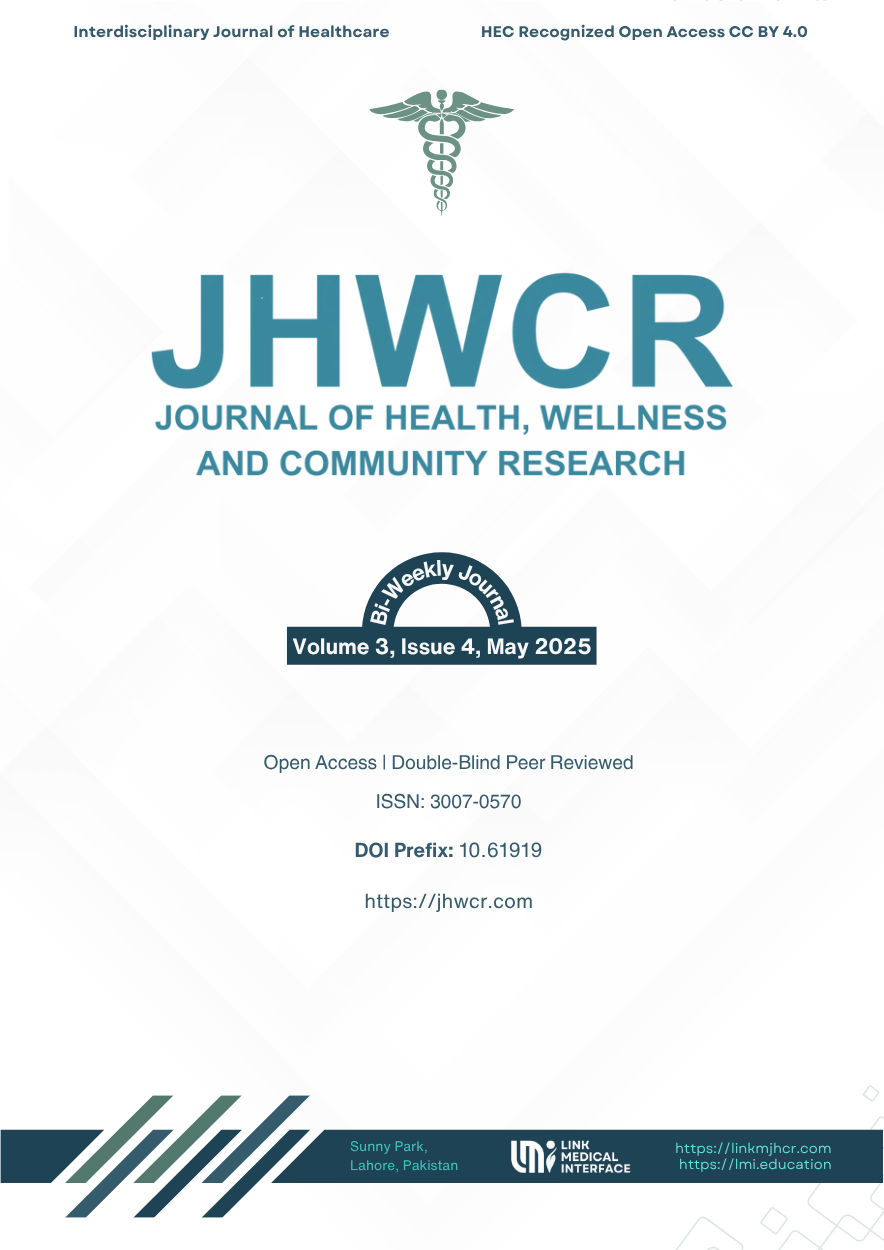Association Between Neck Disability and Perceived Stress Among Night Shift Office Workers
DOI:
https://doi.org/10.61919/kb3x2233Keywords:
Neck Pain, Perceived Stress, Night Shift Work, Musculoskeletal Disorders, Occupational Health, Circadian Rhythm, ErgonomicsAbstract
Background: The increasing prevalence of neck pain and psychological stress among night shift office workers poses a significant occupational health concern. Disruption of circadian rhythms due to night shift schedules contributes to elevated stress levels, which may in turn exacerbate musculoskeletal disorders. However, limited research has directly investigated the association between perceived stress and neck disability in this specific population. Objective: This study aimed to determine the association between neck disability and perceived stress among night shift office workers, evaluating the relationship between stress levels (measured by the Perceived Stress Scale) and neck-related functional impairment (assessed using the Neck Disability Index). Methods: This cross-sectional observational study was conducted among night shift employees (n = 168) aged 20–35 years, working at least 6 hours per night, 5 days a week, for a minimum of one year. Participants with pre-existing musculoskeletal, neurological, or psychiatric conditions were excluded. Data were collected using the validated Neck Disability Index (NDI) and Perceived Stress Scale (PSS). Ethical approval was obtained from the Institutional Review Board (RE-020-2023), and all participants provided informed consent in compliance with the Declaration of Helsinki. Data were analyzed using SPSS v26.0 with chi-square tests, ANOVA, and multinomial logistic regression to determine statistical and clinical significance. Results: Of the 168 participants, 41.67% reported moderate and 35.71% severe neck disability. Moderate stress was reported by 70.83% and high stress by 22.62%. A significant association was found between stress and neck disability (χ² = 1137.996, p < .001). Multinomial regression showed that participants with high stress had 49.85 times greater odds of complete neck disability (95% CI: 9.34–266.05, p < .001), indicating both statistical and clinical relevance. Conclusion: There is a strong, statistically significant association between perceived stress and neck disability among night shift office workers. These findings emphasize the need for integrated workplace interventions addressing both psychological stress and ergonomic health to prevent musculoskeletal impairment and enhance employee well-being.
Downloads
Published
Issue
Section
License
Copyright (c) 2025 Zunaira Qaisar, Rabia Majeed, Maliha Maryam, Rabia Saleem, Khurram Shahzad, Masood Hussain, Alveena Arif (Author)

This work is licensed under a Creative Commons Attribution 4.0 International License.


